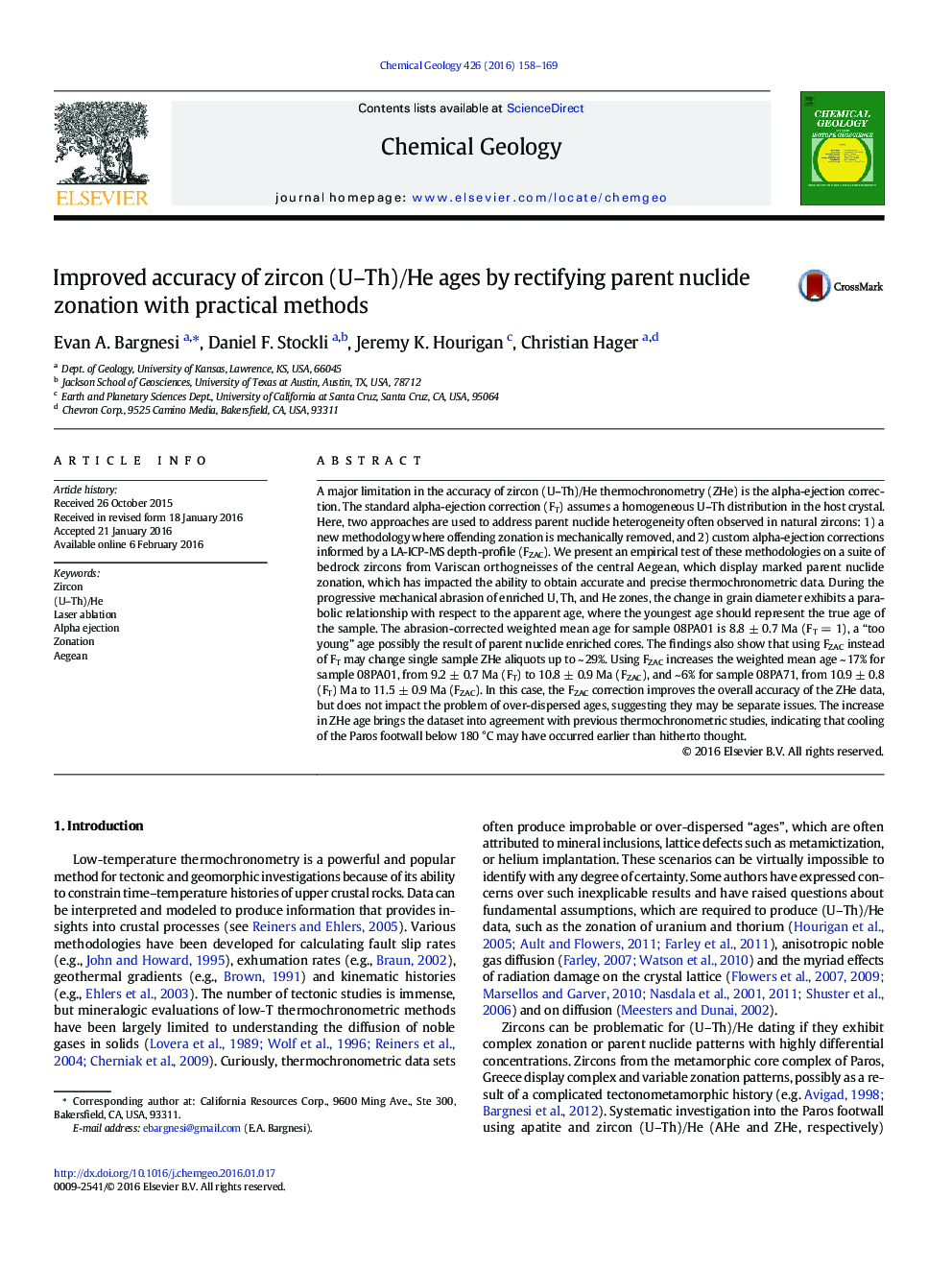| کد مقاله | کد نشریه | سال انتشار | مقاله انگلیسی | نسخه تمام متن |
|---|---|---|---|---|
| 4698337 | 1637548 | 2016 | 12 صفحه PDF | دانلود رایگان |

• New methods for improving the accuracy of zircon (U–Th)/He.
• Modeled 3D α-ejection corrections from laser ablation-derived nuclide concentration.
• Heterogeneous zircons from an Aegean core complex are used to demonstrate method.
• Further refinement needed to reduce overdispersion of ages.
A major limitation in the accuracy of zircon (U–Th)/He thermochronometry (ZHe) is the alpha-ejection correction. The standard alpha-ejection correction (FT) assumes a homogeneous U–Th distribution in the host crystal. Here, two approaches are used to address parent nuclide heterogeneity often observed in natural zircons: 1) a new methodology where offending zonation is mechanically removed, and 2) custom alpha-ejection corrections informed by a LA-ICP-MS depth-profile (FZAC). We present an empirical test of these methodologies on a suite of bedrock zircons from Variscan orthogneisses of the central Aegean, which display marked parent nuclide zonation, which has impacted the ability to obtain accurate and precise thermochronometric data. During the progressive mechanical abrasion of enriched U, Th, and He zones, the change in grain diameter exhibits a parabolic relationship with respect to the apparent age, where the youngest age should represent the true age of the sample. The abrasion-corrected weighted mean age for sample 08PA01 is 8.8 ± 0.7 Ma (FT = 1), a “too young” age possibly the result of parent nuclide enriched cores. The findings also show that using FZAC instead of FT may change single sample ZHe aliquots up to ~ 29%. Using FZAC increases the weighted mean age ~ 17% for sample 08PA01, from 9.2 ± 0.7 Ma (FT) to 10.8 ± 0.9 Ma (FZAC), and ~ 6% for sample 08PA71, from 10.9 ± 0.8 (FT) Ma to 11.5 ± 0.9 Ma (FZAC). In this case, the FZAC correction improves the overall accuracy of the ZHe data, but does not impact the problem of over-dispersed ages, suggesting they may be separate issues. The increase in ZHe age brings the dataset into agreement with previous thermochronometric studies, indicating that cooling of the Paros footwall below 180 °C may have occurred earlier than hitherto thought.
Journal: Chemical Geology - Volume 426, 15 May 2016, Pages 158–169